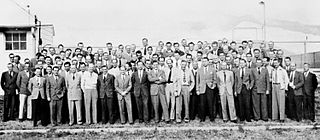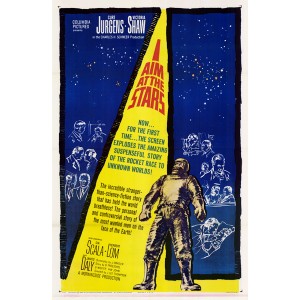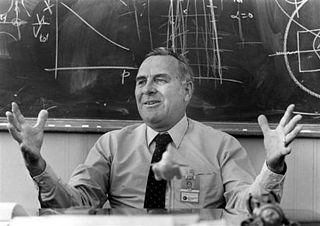Related Research Articles

Jet Propulsion Laboratory (JPL) is a federally funded research and development center in Pasadena, California, United States. Founded in 1936 by Caltech researchers, the laboratory is now owned and sponsored by the National Aeronautics and Space Administration (NASA) and administered and managed by the California Institute of Technology.

Wernher Magnus Maximilian Freiherr von Braun was a German and American aerospace engineer and space architect. He was also a member of the Nazi Party and Allgemeine SS, as well as the leading figure in the development of rocket technology in Nazi Germany and later a pioneer of rocket and space technology in the United States.

Herman Potočnik was an ethnically Slovenian Austro-Hungarian Army officer, electrical engineer and astronautics theorist. He is regarded as an early theorist of modern space flight and is remembered mainly for his work concerning the long-term human habitation of space.
A guidance system is a virtual or physical device, or a group of devices implementing a controlling the movement of a ship, aircraft, missile, rocket, satellite, or any other moving object. Guidance is the process of calculating the changes in position, velocity, altitude, and/or rotation rates of a moving object required to follow a certain trajectory and/or altitude profile based on information about the object's state of motion.

The USC Viterbi School of Engineering is the engineering school of the University of Southern California. It was renamed following a $52 million donation by Andrew J. Viterbi, co-founder of Qualcomm.
Mechanical thrombectomy, or simply thrombectomy, is the removal of a blood clot (thrombus) from a blood vessel, often and especially endovascularly as an interventional radiology procedure called endovascular thrombectomy (EVT). It thus contrasts with thrombolysis by thrombolytic medications, as either alternative or complement thereto. It is commonly performed in the cerebral arteries as treatment to reverse the ischemia in some ischemic strokes. Open vascular surgery versions of thrombectomy also exist. The effectiveness of thrombectomy for strokes was confirmed in several randomised clinical trials conducted at various medical centers throughout the United States, as reported in a seminal multistudy report in 2015.

Charles Elachi is a Lebanese-American professor (emeritus) of electrical engineering and planetary science at the California Institute of Technology (Caltech). From 2001 to 2016 he was the 8th director of the Jet Propulsion Laboratory and vice president of Caltech.

James Howard "Dutch" Kindelberger was an American aviation pioneer. He led North American Aviation from 1934 until 1960. An extroverted character, Kindelberger was famed for his emphasis on hard work, orderliness and punctuality.
Charles Alderson Janeway was an American pediatrician, medical professor, and clinical researcher.

A drug-eluting stent (DES) is a peripheral or coronary stent placed into narrowed, diseased peripheral or coronary arteries that slowly release a drug to block cell proliferation. This prevents fibrosis that, together with clots (thrombi), could otherwise block the stented artery, a process called restenosis. The stent is usually placed within the peripheral or coronary artery by an interventional cardiologist or interventional radiologist during an angioplasty procedure.

Captain Robert C. Truax (USN) was an American rocket engineer in the United States Navy, and companies such as Aerojet and Truax Engineering, which he founded. Truax was a proponent of low-cost rocket engine and vehicle designs.

Adolf Karl Thiel was an Austrian-born German expert in guided missiles during World War II, and later worked for the United States Army and TRW.

I Aim at the Stars is a 1960 biographical film which tells the story of the life of Wernher von Braun. The film covers his life from his early days in Germany, through Peenemünde, until his work with the U.S. Army, NASA, and the American space program.

Neal Baer is an American pediatrician and television writer and producer. He is best known for his work on the television shows Designated Survivor, ER and Law & Order: Special Victims Unit.
Nitinol biocompatibility is an important factor in biomedical applications. Nitinol (NiTi), which is formed by alloying nickel and titanium, is a shape-memory alloy with superelastic properties more similar to that of bone, when compared to stainless steel, another commonly used biomaterial. Biomedical applications that utilize nitinol include stents, heart valve tools, bone anchors, staples, septal defect devices and implants. It is a commonly used biomaterial especially in the development of stent technology.
Dr. Thomas J. "Tom" Fogarty is an American surgeon and medical device inventor. He is best known for the invention of the embolectomy catheter, which revolutionized the treatment of blood clots (embolus).

Werner Karl Dahm was an early spaceflight scientist of the Peenemünde Future Projects Office who emigrated to the US under Operation Paperclip and was the Marshall Space Flight Center Chief Aerodynamicist.
Eugene F. Lally was American aerospace engineer. He worked in the early 1960s on U.S. interplanetary space programs. Beside his space programs he was also an inventor and developed non-space products with his own company Dynamic Development Co. which he founded in the early 1960s. He later became an active amateur photographer and lubrication product entrepreneur. Lally contributed articles for popular space, astrobiology, photography, travel, and archaeology magazines. He was also a speaker at local space exploration and extraterrestrial intelligence (UFO) society meetings where he gave first-hand accounts of the early U.S. space program, commentaries on current U.S. space exploration activities and the search for extraterrestrial intelligence.

Laurel van der Wal was an American aeronautical engineer who is known for contributions to bioastronautics. She was named the Los Angeles Times's "1960 Woman of the Year in Science" for her contributions to the field.

John Francis McCarthy Jr. was an American scientist and engineer. He worked for the Massachusetts Institute of Technology as director of its Center for Space Research; the National Aeronautics and Space Administration (NASA) as the director of its Lewis Research Center; the United States Air Force, where he served with the Strategic Air Command and as a member of the United States Air Force Scientific Advisory Board; North American Rockwell, where he oversaw the design and development of the Apollo command and service module that took the first men to the Moon, and the S-II of the Saturn V rocket. His work doubled, and in the case of the Lockheed C-5 Galaxy, tripled, the service life of aircraft.
References
- ↑ "Herman Bank dies at 96; engineer designed collapsible surfboard". Los Angeles Times. November 12, 2012.
- ↑ Noriyuki, Duane (2001). Rocket Boys Still Pushing the Envelope. Los Angeles Times.
- ↑ Britt, Robert R. (2001). Shoot From The Hip: A History of Rocket Science. Space.com
- ↑ Britt, Robert R. (2001). Shoot From The Hip: A History of Rocket Science. Space.com
- ↑ Jet Propulsion Laboratory Archives. The Bumper 8 Fiftieth Anniversary Collection, 2000.
- ↑ Ransom, Franki V (1992). Retirees With Space-Age Expertise Help Hospitals. Los Angeles Times.
- ↑ Surfline.com (2009). “Multiboard” Creator Turns 93.